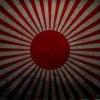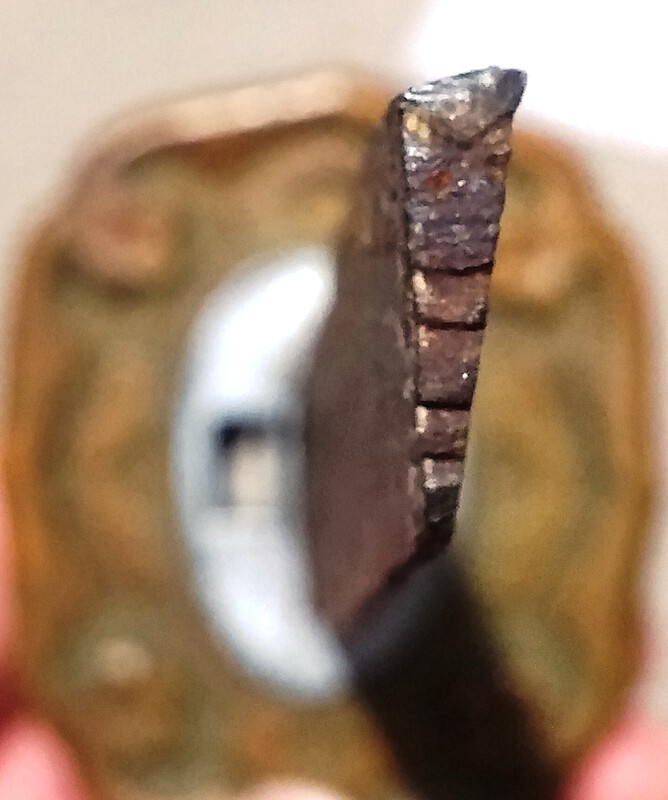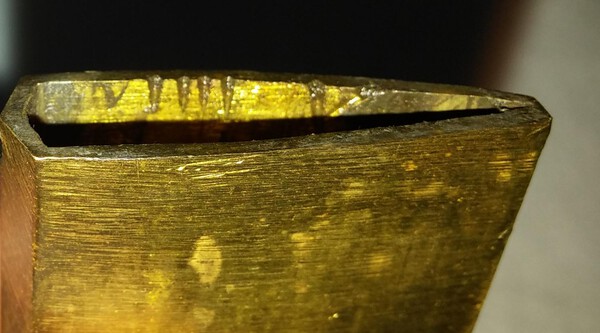-
Posts
1,402 -
Joined
-
Last visited
-
Days Won
12
Content Type
Profiles
Forums
Events
Store
Downloads
Gallery
Everything posted by Shamsy
-
Thankfully the Japanese national archives have been translated and explained by Nick, who in several of his detailed and factual accounts has explained some of the shortage initiatives used to close supply gaps for officer swords. One that he discussed as an aside in the Type 0 translation is the Military Sword Appraisal Committee in 1938 which actively purchased samurai swords to use as army and naval guntos. Another measure was allowing NCO to bring their own samurai swords in 1945. While I'm sure at least someone cooped up in a tank brought along a wakizashi, the only way to call a sword a ‘crew sword’ is knowing that the veteran obtained it from a driver/pilot. You're right Stephen, but I think it's the merchants that like the ‘crew gunto’ idea the most!
-
Unfortunately not. The very vast majority of wakizashi mounted for military use has nothing to do with the role of the officers, but everything to do with the shortage of swords. Nothing more, the whole ‘crew gunto’ being assigned to all these swords is an old fallacy.
-

Id Of Swords From The Korean/Japanese War And Ww11.
Shamsy replied to irocz86's topic in Military Swords of Japan
Hi Ron, The Type 95 Katana (still not a Samurai) is mid production and not Gifu or Seki. Probability suggests Suya as the manufacturer. Would need to see fuchi to determine much more. -
I held off as long as possible... But can we please stop calling every wakizashi in military mounts a crew gunto? They are just military wak instead of katana. Crew implies that they're specifically for vehicle crew, which has been so completely disproved by now it is misleading to people seeking information.
-

Id Of Swords From The Korean/Japanese War And Ww11.
Shamsy replied to irocz86's topic in Military Swords of Japan
Japanese looking one is a Type 95 NCO sword. Unfortunately the poor quality of the photos tells me nothing about it. You need to provide a picture of the numbers on the blade, and check very careful on the fuchi (ummm... black collar thing just after handle before handguard) for markings. We need very clear photos of both sides to see if there are markings. The sword is certainly not samurai but in some manners imitates the traditional katana. However, it is almost entirely machine made. They're still very collectible mind. Not in a position to look up the second one and the dress swords hold no interest to me, so I have no tacit knowledge to share. -

Would Appreciate Id Help W/ Wwii Japanese Short Sword.
Shamsy replied to CBurns's topic in Military Swords of Japan
You're very welcome Once someone sees this they'll look it up and get you more info from the book. I am just in the middle of things today. Cheers -

Would Appreciate Id Help W/ Wwii Japanese Short Sword.
Shamsy replied to CBurns's topic in Military Swords of Japan
This is a standard police short sword. The badge on the back-strap is their emblem. The plating from scabbard is all gone which is usual. Almost always pretty poor machine made blades. They are featured with examples in the F&G and Dawson, so someone else can read it and write it all up as I'm busy right this minute. They are scarce, but not terribly desirable. A bit like poor Type 32. There's plenty of replated examples or repainted. One with a traditional wakizashi blade adapted (the machine ones are retained by a screw in nakago tip) are higher quality and rather desirable. P.s. in the second photo you have the throat of the saya still attached around the habaki by the retention clip. I hope you didn't force it from the scabbard unknowingly and tear off the throat... -
Stegel and I were told a story about a returning veteran in Aus (can't remember nationality but could have been croatian?) who decided to paint the sword he brought home bright sky blue. That would be a sight! A bit of an exception though in my opinion, as I'd leave a sword as is where I knew the history of how it became so unique. To me that's just a further bit of the history of the sword. Hard to drawa line between valid sword hhistory and post war vandalism.
-
From the discussion regarding the odd gunto I picked up with the 'Roman numerals' (Parade/lightweight gunto thread), it was mentioned that lead based paint was used during wartime and that nail varnish remover (acetone) doesn't react. This seemed to be the case, as I was not able to remove a speck of paint. However, I recently purchased a sword with an unusual green (or brown, colour blind) colored saya and I wanted to see if it was a repaint. I'll stop here and state: I was 99% sure it wasn't, as the rust patterns and patina were perfect, but I had niggling doubt. I thought I'd try this acetone trick. A tiny bit of acetone on a paper towel rubbed a tiny bit of green off. But I was still 99% certain the paint was original. The details were too correct. So I tentatively tried the same trick on a further 5 saya, all different shades, all in various states of completeness. All made a light green smear on the paper towel. So that leaves me to think that either they didn't use lead based paint or lead based paint is susceptible to acetone. Just thought I'd share this small finding. I have no idea about paint and acetone, so if you do, please enlighten me. NOTE - No NCOs were hurt in the making of this finding. A very tiny area was wiped, a tiny little stain was removed, not at all noticeable and there was paint underneath. Literally only the smallest top of a thick layer. Believe me, handling one without gloves will do more harm.
-
It is important to do a little research before purchasing anything, as a 5 minute google search would have provided you enough genuine examples that you would know this for what it is. There is so much public information in books, forums and websites to view. Books are probably the tried and true Jim Dawsons, while a search of 'real Japanese NCO sword' would provide a wealth of informative sites and images.
-
I was about to say tassle retention would be my theory, but beaten to it! Got my vote.
-

General's Swords In The Australian War Memorial
Shamsy replied to PNSSHOGUN's topic in Military Swords of Japan
I really need to get to the memorial to pay my respects but also to read and look at the exhibits. Thank you for posting and reminding me that I need to get that trip organised. -
I'll just add since this thread has been raised; there are some very good Polish reproduction swords that are being aged and sold as genuine. They are all Ijima and can be identified, though it is admittedly difficult in some cases. One good sign is paint on the fuchi and spring clip. Now, Iijima is probably the second most prevalent manufacturer, so please don't get the idea that most of them are fakes. The whole myth regarding the prevalence of fakes is spread only by canny merchants with something to gain. Most from the US are genuine.
-
On the cover is unusual, almost always stuck to the saya under the throat. Maybe they forgot to stick it on until after the leather was applied...
-
Not sure about the mark (or not), but unmarked/signed/stamped swords are not at all uncommon. More surprising is that some frankly average blades were signed. When you are producing blades for quantity and demand as opposed to art I'd think you wouldn't be so inclined to put your name to it. Like if a famous famous fashion designer had to quickly produce a huge clothing range for Wal-Mart. Bear in mind that sometimes painted kanji were used, for presumably assembly purposes.
-
A lot of swords have suffered ‘cleaning’ from westerners who remove protective coatings in favor of shiny metal underneath. This is particularly prevalent in 98 and 95 where tsuba are polished to remove the brown glaze coating that was intended to protect the metal. This is stated in F&G and always stuck with me.
-

Pet Dragon Solves Faux Roman Numeral Mystery!
Shamsy replied to Bruce Pennington's topic in Military Swords of Japan
Ah, I see... I actually can't remember that thread that you're after, but I'll have a scan through some today and see if I can find it. You're welcome to use any of my pictures anytime mate. I'll see if I can get one in focus on the nakago, because that wasn't a good shot at all. In fact, I'll take a whole new look at that sword and see what the markings look like. We can consolidate all our info here, as the representative thread for these numerals! EDIT: So I had a look because this was really starting to interest me (probably just in time because I was going to sell this). So from the photos attached, you can see that the end of the nakago has XIII cut into it (the other picture was just out of focus Bruce, it's hard to get a focus on a tiny area. Took me ages to take the new one). The habaki has, as does the fuchi, what is either VIII or XIII, but the second half of the strokes are a little faint (would be hard to get the file into the narrow space I suppose). Assuming that the system seems to be / representing 5, I would go with the explanation that it is hard to angle a file to make a good X in the tiny working area. The spring clip, tsuba and seppa are all marked 14. So if the theory holds, then XIII is 14, meaning that the sword blade and fittings match. The saya throat and scabbard body both have /III, which I think then makes that an 8. I'm glad this realisation has been made. I commented that I had found some little markings that I felt were made intentionally when I first started taking the sword apart and posting my results. It's pleasing to see that these are not the sole example, not to mention that they seem to be matching numbers for the entire sword. That adds some validity to my theory that the sword was original (though I even doubted the blade which is rather unusual and not as nicely made as Japanese craftsmanship should dictate). -

Pet Dragon Solves Faux Roman Numeral Mystery!
Shamsy replied to Bruce Pennington's topic in Military Swords of Japan
What I mean Bruce is that Dave already posted the link in the tread he started for the markings (see post 5), so I didn't really get why that thread wasn't just continued. -

Pet Dragon Solves Faux Roman Numeral Mystery!
Shamsy replied to Bruce Pennington's topic in Military Swords of Japan
I posted a number of these Bruce, which were linked in that thread. Why start another? -
That's a bit of a myth I'm afraid. The separation is mostly post war, though in the case of type 32, which are rigidly uniformed, it's possible that replacement scabbards and swords were mismatched in the field. Were they returned to an arsenal they would have been re-stamped. I'm afraid I cannot remember where I read that, but it was a good source (maybe Nick?) that I trusted. So while I have nothing to back it up, I believe this to be the case.
-
Bruce is not saying it is either a 1899 or Type 32, he is telling you both designations for the same sword. They're very common and not particularly desired by collectors. Great swords though.
-

Is This Blade Machine Made Or Traditional?
Shamsy replied to vfox's topic in General Nihonto Related Discussion
Just an aside that I used to own a wakizashi with the... Seki? wartime stamp, indicating it was non traditionally made. However, I agree with Brian that these go against the norm. -

Help With Identification / Translation
Shamsy replied to Pet Dragon's topic in Military Swords of Japan
Hi Dave, As you already astutely pointed out, the funny officers sword I have of some unknown pattern has these markings too. Since Bruce, yourself and I all have examples now, nor are they unique, it would seem apparent that there is some significance to them. However, what they are I do not know! I would have thought assembly control of some kind, except that this is a sword still in 94 mounts, suggesting very early as these katana style swords go. This is not even mentioning that they are all different styles. These marks are not documented anywhere that I am aware of. Let me make some enquiries. Cheers, Steve -
Hi Jim, 1880-1890s would suggest the Type 32 Cavalry (Ko) or Foot (Otsu) patterns. These were entirely machine made and very 'Western military' style. These were also property of the emperor and so could be sold. Kyu-Gunto were private purchase by officers and a little early... just highly unlikely. You will find ample references to Type 32 with a Google search or in these forums. Cheers, Steve
-
I'll not guess what it is. I will say that in the 95s there are plenty of examples of a mesh-like cloth being applied as an undercoat to the saya and painted over, so the suggestion is not without basis.








